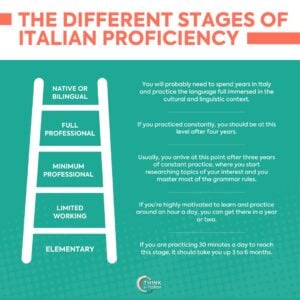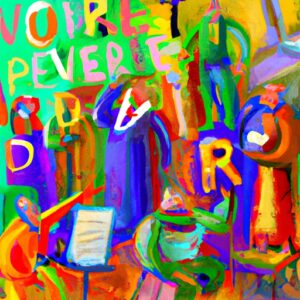How to say good and well in Italian?
Buono, bravo, bello and bene are very common Italian words.
They are relatively simple to understand, but their correct use can be somewhat confusing for Italian learners because they sound similar (and all start with the letter “b”!).
They can sometimes all be translated with the word good or well in English.
First of all, from a grammatical point of view, there is the first distinction: buono, bravo, and bello are adjectives (and their forms change according to the noun they are paired with or refer to), while bene is an adverb and its form is therefore invariable.
How to use bene?
Let’s start with bene. It is an adverb of manner and it’s always used with a verb.
Adverbs of manners describe how or in which way an action is performed or takes place.
- Bene is used to indicate that the action is performed satisfactorily, properly, or correctly. The opposite of bene is male.
Let’s look at a few examples with bene:
Lucia canta molto bene.
Lucia sings very well.
Stai bene oggi?
Do you feel well today?
How to use buono?
Buono is an adjective and always refers to a noun. It must be declined according to the noun’s grammatical gender and number.
It is declined as follows:
| Masculine | Feminine | |
| Singular | buono / buon | buona |
| Plural | buoni | buone |
When buono immediately precedes a masculine singular noun, the contracted form buon is used instead.
-
When buono refers to people, it describes that someone is a good person, usually meaning they are nice, kind, friendly, or selfless.
Mio nonno è una persona molto buona.
My grandfather is a very nice person (= nice, of good soul, good heart).
- When buono refers to objects, it usually describes goodness, quality, or flavor.
Le tagliatelle che cucina Luisa sono veramente buone.
The tagliatelle (a pasta dish) cooked by Luisa are really good (= tasty).
Questo divano è di buona qualità.
This sofa is of good quality.
Penso che “Titanic” sia un buon film.
I think that “Titanic” is a good movie (= good quality, done well).
How to use bravo?
Bravo is an adjective and always refers to a noun. It always refers to people or living beings, not objects.
It must be declined according to the noun’s grammatical gender and number.
It is declined as follows:
| Masculine | Feminine | |
| Singular | bravo | brava |
| Plural | bravi | brave |
- Bravo expresses a positive judgment about someone’s talent or skills.
Marta è una brava attrice.
Marta is a good actress (= talented).
Filippo è bravo in matematica.
Filippo is good at math.
- Bravo can also mean that someone is polite and behaves properly (has good manners).
Luca è un bravo ragazzo.
Luca is a nice guy (= he is polite and behaves properly, and has good manners).
Practice with Quizlet
Here's a set of flashcards and quizzes to practice this grammar topic.How to use bello?
Bello (beautiful) is an adjective and always refers to a noun. It must be declined according to the noun’s grammatical gender and number.
It is declined as follows:
| Masculine | Feminine | |
| Singular | bello / bel / bell’ | bella |
| Plural | belli | belle |
When bello immediately precedes a masculine singular noun, the contracted form bel or bell’ (for nouns starting with vowels) is used instead.
- When bello refers to people, it describes someone handsome or beautiful.
Valentino è un bell’uomo.
Valentino is a handsome man.
- When bello refers to objects, it usually expresses a positive judgment on their aspect and aesthetics.
Venezia è una bella città.
Venezia is a beautiful city.
Penso che “Titanic” sia un bel film.
I think that “Titanic” is a beautiful movie (= enjoyable, pleasant to watch).




















4 Responses
“Buono” means “good as in “not evil”. “Bravo” could also mean “well behaved” or “able, skilled at something”.
Caio Stefano,
The baby is well behaved. Per che la riposta e “il bambino e buono”; Bravo/a refers to people so why not “il bambino e bravo”??? Can both be correct? Grazie!
“Questo divano è di buona qualità.” Why is it “buona” and not “buono” since it is describing “divano” (masculine, no?)
“Buona qualità” (good quality). “Qualità” is feminine.